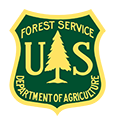DOE Report on Free-Air CO2 Enrichment Experiments (FACE): Results, Lessons, and Legacy
*Shared by DOE*
The U.S. Department of Energy report on the Free-Air CO2 Enrichment Experiments (FACE) Results, Lessons, and Legacy
Summary:
Growing concern in the 1970s about potential long-range consequences of carbon dioxide (CO2) emissions from the combustion of fossil fuels prompted the U.S. Department of Energy (DOE) to begin developing a CO2 research program. The goal was to obtain the scientific information needed to reduce uncertainty and develop a knowledgebase for decision-making. At its start in 1980, this program had three components: the global carbon cycle, climate effects, and vegetation effects. The vegetation effects component recognized that increased atmospheric CO2 could be a potential benefit to vegetation and crops because CO2 is an essential resource for plant growth. In addition to increasing crop yield, program developers and researchers recognized that this fertilizer effect could also result in greater storage of fossil fuel CO2 by forests.
Initial experiments were small in scale and scope and focused on the photosynthesis, physiology, and water use of crop plants, but the focus shifted toward responses of plants in natural systems, as needed for connections to the global carbon cycle. Program research investigated CO2 interactions with other environmental variables, emphasizing field research whenever possible and recognizing that exposure to elevated CO2 concentrations under realistic field conditions should lead to better predictions of plant response.
Whole-ecosystem field experiments were instituted in low-stature ecosystems, but experiments to address forest responses necessarily relied on tree seedlings or saplings in open-top chambers (OTCs) and not within intact forest ecosystems. The need for larger-scale, longer-duration experiments in each of the world’s six major biomes (tundra, boreal forest, temperate forest, tropical forest, grassland, and desert) became clear, and for these experiments, free-air CO2 exposure facilities were necessary. This report summarizes the objectives and main results of DOE-sponsored experiments employing such facilities, along with the outcomes from research on ecosystem responses using field chambers. Additionally, this report highlights the many successes of DOE CO2 enrichment studies and considers the lessons learned that can be used to guide future initiatives.
For more information on the FACE Model-Data Synthesis project, please contact Anthony Walker (ORNL) and see the project website




